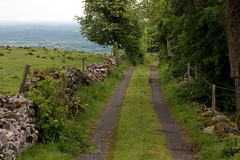Many might be surprised to learn that evidence exists linking the traditional Irish wake, rooted in Catholic practices, to an ancient Jewish tradition, in which mourners left the burial chamber of a recently departed loved one open for three days before sealing it, allowing family members to view the body, and reserving hope that their loved one might show signs of life. Wakes were often fraught with intense emotions ranging from concentrated grieving to boisterous laughter. For two or three nights, mourners would eat, drink (usually whiskey or a strong homemade concoction), and tell heartfelt stories from the past.
“Wakes were often fraught with intense emotions ranging from concentrated grieving to boisterous laughing.”
Today, a wake represents a ceremony of both sadness and joy. While allowing a safe space for friends and family to mourn, the wake also allows for a celebration of the loved one who passed — albeit a much more subdued version than those of centuries past. They are typically held in the home of the person who has passed or in the home of a close relative, and oftentimes they are held at funeral homes, for what is now considered a viewing. Traditionally, the male relatives sit with the body through the night and share the responsibility of being present at all times. Once the wake is over, the casket is closed and brought to a cemetery for burial, where friends and family members say their final prayers, and bring the funeral to a close. Even though wakes are not limited to Irish people anymore, they often share many similarities with those that these peoples performed centuries ago.

 Taking a Look at the Traditional Irish Wake
Taking a Look at the Traditional Irish Wake




 How Dare You Die Now!
How Dare You Die Now!
 Debating Medical Aid in Dying
Debating Medical Aid in Dying
 “Help Me, Helen”
“Help Me, Helen”














